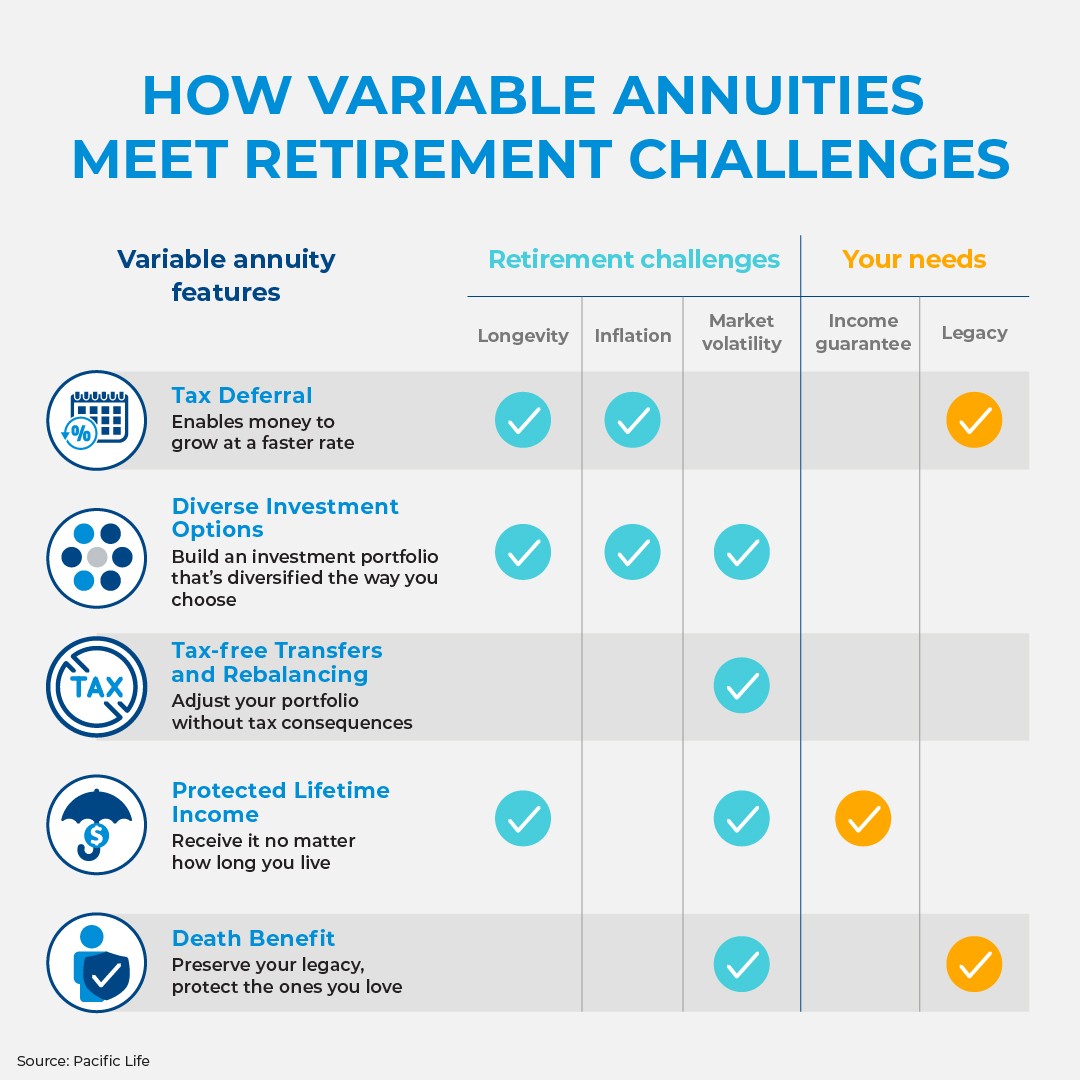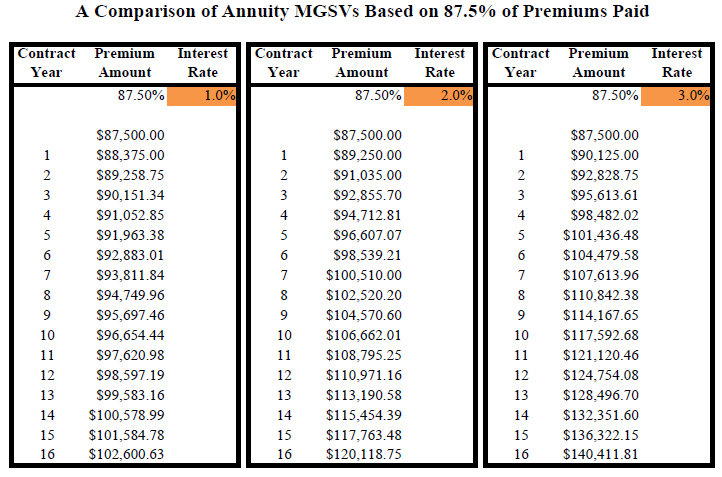Featured
Table of Contents
Simply as with a dealt with annuity, the proprietor of a variable annuity pays an insurer a round figure or collection of settlements in exchange for the assurance of a series of future repayments in return. As discussed above, while a repaired annuity grows at an ensured, consistent rate, a variable annuity expands at a variable rate that depends upon the performance of the underlying financial investments, called sub-accounts.

During the buildup phase, properties spent in variable annuity sub-accounts grow on a tax-deferred basis and are exhausted only when the contract proprietor takes out those revenues from the account. After the buildup stage comes the income stage. With time, variable annuity possessions need to in theory raise in value until the agreement owner determines he or she want to begin withdrawing money from the account.
The most significant problem that variable annuities normally existing is high price. Variable annuities have a number of layers of costs and expenditures that can, in aggregate, develop a drag of approximately 3-4% of the contract's value annually. Below are the most usual costs connected with variable annuities. This cost makes up the insurance firm for the risk that it thinks under the regards to the agreement.
Decoding How Investment Plans Work Key Insights on Your Financial Future Defining the Right Financial Strategy Features of Smart Investment Choices Why Indexed Annuity Vs Fixed Annuity Matters for Retirement Planning How to Compare Different Investment Plans: Simplified Key Differences Between Different Financial Strategies Understanding the Risks of Long-Term Investments Who Should Consider Strategic Financial Planning? Tips for Choosing Variable Vs Fixed Annuity FAQs About Fixed Indexed Annuity Vs Market-variable Annuity Common Mistakes to Avoid When Choosing Fixed Interest Annuity Vs Variable Investment Annuity Financial Planning Simplified: Understanding Your Options A Beginner’s Guide to Fixed Index Annuity Vs Variable Annuity A Closer Look at How to Build a Retirement Plan
M&E cost costs are computed as a percent of the agreement value Annuity issuers pass on recordkeeping and other administrative prices to the agreement proprietor. This can be in the form of a flat yearly charge or a portion of the agreement worth. Management costs might be included as component of the M&E threat cost or might be assessed individually.
These costs can range from 0.1% for easy funds to 1.5% or more for actively managed funds. Annuity contracts can be tailored in a variety of means to offer the specific demands of the agreement proprietor. Some common variable annuity bikers include guaranteed minimum build-up benefit (GMAB), ensured minimum withdrawal advantage (GMWB), and assured minimal income benefit (GMIB).

Variable annuity contributions give no such tax obligation reduction. Variable annuities have a tendency to be extremely inefficient vehicles for passing riches to the future generation because they do not delight in a cost-basis change when the original agreement proprietor passes away. When the owner of a taxed investment account dies, the cost bases of the investments kept in the account are readjusted to mirror the marketplace costs of those investments at the time of the proprietor's death.
Breaking Down Fixed Index Annuity Vs Variable Annuities Everything You Need to Know About Financial Strategies Defining Fixed Index Annuity Vs Variable Annuity Features of Smart Investment Choices Why Choosing the Right Financial Strategy Matters for Retirement Planning Immediate Fixed Annuity Vs Variable Annuity: A Complete Overview Key Differences Between Fixed Interest Annuity Vs Variable Investment Annuity Understanding the Risks of Fixed Annuity Vs Equity-linked Variable Annuity Who Should Consider Fixed Indexed Annuity Vs Market-variable Annuity? Tips for Choosing Fixed Indexed Annuity Vs Market-variable Annuity FAQs About Annuity Fixed Vs Variable Common Mistakes to Avoid When Planning Your Retirement Financial Planning Simplified: Understanding Your Options A Beginner’s Guide to Annuities Fixed Vs Variable A Closer Look at How to Build a Retirement Plan
Such is not the situation with variable annuities. Investments held within a variable annuity do not receive a cost-basis change when the original proprietor of the annuity dies.
One substantial concern associated with variable annuities is the possibility for conflicts of interest that may exist on the part of annuity salesmen. Unlike an economic expert, that has a fiduciary task to make financial investment choices that profit the customer, an insurance policy broker has no such fiduciary commitment. Annuity sales are extremely profitable for the insurance policy experts who sell them as a result of high in advance sales commissions.

Numerous variable annuity agreements consist of language which places a cap on the percent of gain that can be experienced by certain sub-accounts. These caps stop the annuity owner from completely taking part in a portion of gains that could otherwise be appreciated in years in which markets generate substantial returns. From an outsider's perspective, presumably that financiers are trading a cap on financial investment returns for the aforementioned assured flooring on investment returns.
As noted above, give up fees can drastically limit an annuity owner's capability to move properties out of an annuity in the very early years of the contract. Additionally, while the majority of variable annuities permit agreement proprietors to withdraw a defined quantity during the accumulation phase, withdrawals past this quantity generally result in a company-imposed cost.
Withdrawals made from a set rate of interest investment option might also experience a "market price adjustment" or MVA. An MVA adjusts the worth of the withdrawal to reflect any kind of changes in interest prices from the time that the cash was bought the fixed-rate option to the time that it was withdrawn.

Rather commonly, even the salespeople who sell them do not totally comprehend how they function, and so salesmen occasionally victimize a purchaser's feelings to market variable annuities as opposed to the merits and suitability of the items themselves. Our team believe that investors must totally comprehend what they own and just how much they are paying to own it.
Highlighting the Key Features of Long-Term Investments A Closer Look at What Is Variable Annuity Vs Fixed Annuity Defining the Right Financial Strategy Benefits of Retirement Income Fixed Vs Variable Annuity Why Variable Vs Fixed Annuity Is a Smart Choice Retirement Income Fixed Vs Variable Annuity: Simplified Key Differences Between Different Financial Strategies Understanding the Risks of Fixed Income Annuity Vs Variable Growth Annuity Who Should Consider Strategic Financial Planning? Tips for Choosing Fixed Index Annuity Vs Variable Annuity FAQs About Variable Annuities Vs Fixed Annuities Common Mistakes to Avoid When Choosing Variable Annuity Vs Fixed Annuity Financial Planning Simplified: Understanding Pros And Cons Of Fixed Annuity And Variable Annuity A Beginner’s Guide to Smart Investment Decisions A Closer Look at How to Build a Retirement Plan
The exact same can not be said for variable annuity assets held in fixed-rate financial investments. These assets legally belong to the insurance provider and would certainly consequently go to threat if the firm were to fall short. In a similar way, any assurances that the insurer has actually consented to give, such as a guaranteed minimal income benefit, would remain in inquiry in the event of a business failing.
Prospective purchasers of variable annuities must understand and take into consideration the financial problem of the releasing insurance coverage business prior to entering into an annuity agreement. While the advantages and downsides of different sorts of annuities can be questioned, the real problem surrounding annuities is that of suitability. Place simply, the inquiry is: who should possess a variable annuity? This question can be difficult to answer, given the myriad variants available in the variable annuity universe, but there are some fundamental standards that can assist financiers decide whether or not annuities need to contribute in their financial strategies.
Besides, as the saying goes: "Customer beware!" This post is prepared by Pekin Hardy Strauss, Inc. Annuities for conservative investors. ("Pekin Hardy," dba Pekin Hardy Strauss Wealth Management) for informational purposes only and is not meant as a deal or solicitation for organization. The details and information in this post does not constitute legal, tax, accounting, investment, or various other specialist guidance
Table of Contents
Latest Posts
Analyzing Strategic Retirement Planning A Comprehensive Guide to Investment Choices Defining Choosing Between Fixed Annuity And Variable Annuity Benefits of Choosing the Right Financial Plan Why Fixed
Highlighting the Key Features of Long-Term Investments A Closer Look at How Retirement Planning Works Breaking Down the Basics of Investment Plans Pros and Cons of Fixed Annuity Or Variable Annuity Wh
Exploring Variable Annuity Vs Fixed Indexed Annuity A Comprehensive Guide to Fixed Annuity Or Variable Annuity What Is the Best Retirement Option? Features of Smart Investment Choices Why Fixed Index
More
Latest Posts